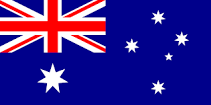The first thing that will stand out when you take up karate, as opposed to any other form of physical activity, is the Japanese components such as terminology, counting, even some traditions like bowing.
While karate was developed on the small island of Okinawa, it thrived once it reached mainland Japan. It was the Japanese who introduced the karate gi (uniform) and the concept of coloured belts. It was also the Japanese who played a major role in spreading karate to the world. Because of this, Japan is often generally regarded as the homeland of karate.
Beyond being a form of physical exercise and self-defense, a large part of karate training evolved around character development and Japanese cultural values (such as respect, courtesy, loyalty, self-discipline, humility and the development of self-confidence without ego). This meant that karate was as beneficial to the mind as it was to the body.
Western cultures who adopted karate saw the significance of preserving these values and as such, also took on board the Japanese karate traditions.
Regardless of how our world changes in industry and technology, and irrespective of how fast paced the world becomes, once we step inside the dojo doors (training hall), things remain as they are. In centuries to come, the world will be vastly different, but one can rest assured knowing that inside the karate dojo, the tradition and environment will remain the same, as will the traditional values karate promotes.
Some of the Japanese traditions you will encounter early on in your training include:
Bowing To Enter And Exit The Dojo (Training Hall)
Each time we enter or leave the dojo doors, we stop and briefly perform a standing bow. In short, we do this by bringing our heels together (feet at 45 degree angels), place our arms by our sides and bow.
We bow as a sign of respect to the dojo and its environment. It is also to help reiterate in our minds that we are leaving the outside world (and all our problems, stresses, etc) behind and entering a place where we shall focus purely on our own self-development. It is like you leave the rest of your day outside, drop off all emotional baggage at the door so your mind can be open to learning.
Formal Bowing Ceremony
Each class starts and finishes with a bowing ceremony. This has no religious connotations whatsoever, nor does it have anything to do with a master-slave relationship between the instructor and student. When a bow takes place, it is a gesture of mutual respect, much like a handshake in western society.
The three bows that take place at the beginning and end of a class are:
- Kancho Sullivan. This is a means to show respect to the style’s founder and Chief Instructor, Kancho Robert Sullivan.
- Sensei (Instructor). This is a means for students to show respect to their instructor, who gives up his or her time to help others develop their karate knowledge and ability.
- Auta-gani. This third bow is a sign of mutual respect between the student and the teacher. It also exists to pay respects to your fellow students for their training and cooperation.



